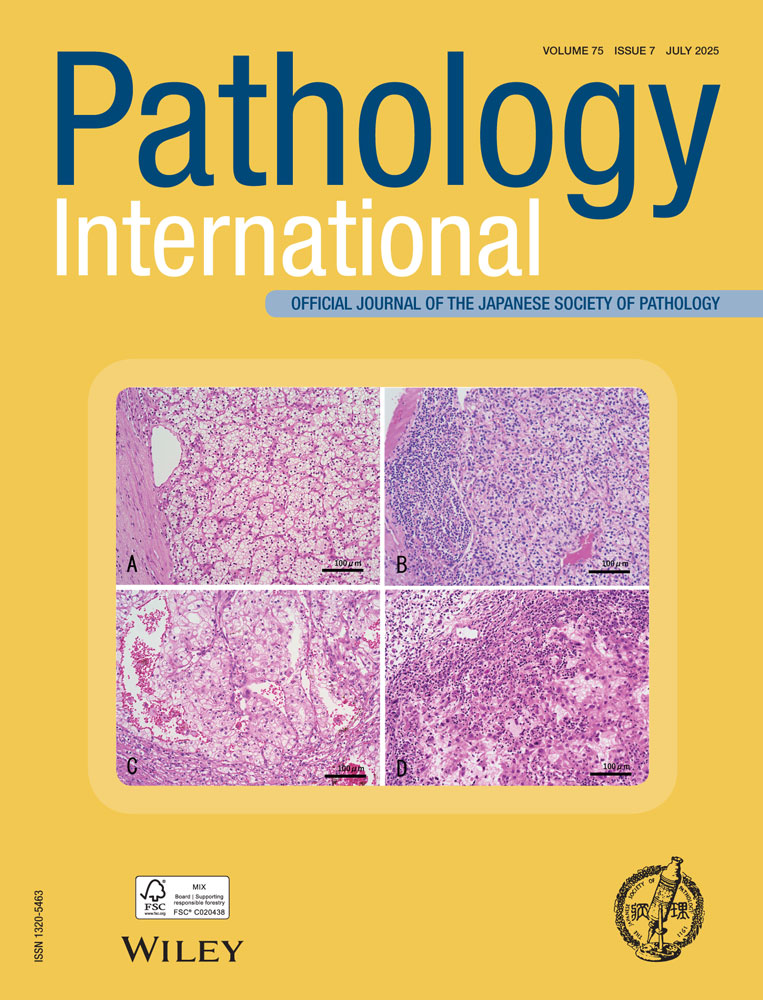ADENOMYOEPITHELIOMA OF THE BREAST
A Case Report with an Immunohistochemical Study
Abstract
We treated a 62-year-old woman with adenomyoepithelioma of the breast, an extremely rare tumor, which showed a bicellular pattern of ductal and myoepithelial elements bearing some histologic resemblance to pleomorphic adenoma of the salivary gland. The tumor was made up of cells positive for actin and S-100 protein, and some positive for epithelial membrane antigen (EMA). Thus, this tumor showed biphasic differentiation towards myoepithelial cells and to duct epithelial cells. Compared with findings in related tumors reported in the literature, the myoepithelial cells in the present tumor were less frequently spindle-shaped and had abundant eosinophilic or clear cytoplasm. A simple mastectomy was done and at the time of writing 20 months later there has been no recurrence. Adjuvant chemotherapy was not prescribed.




